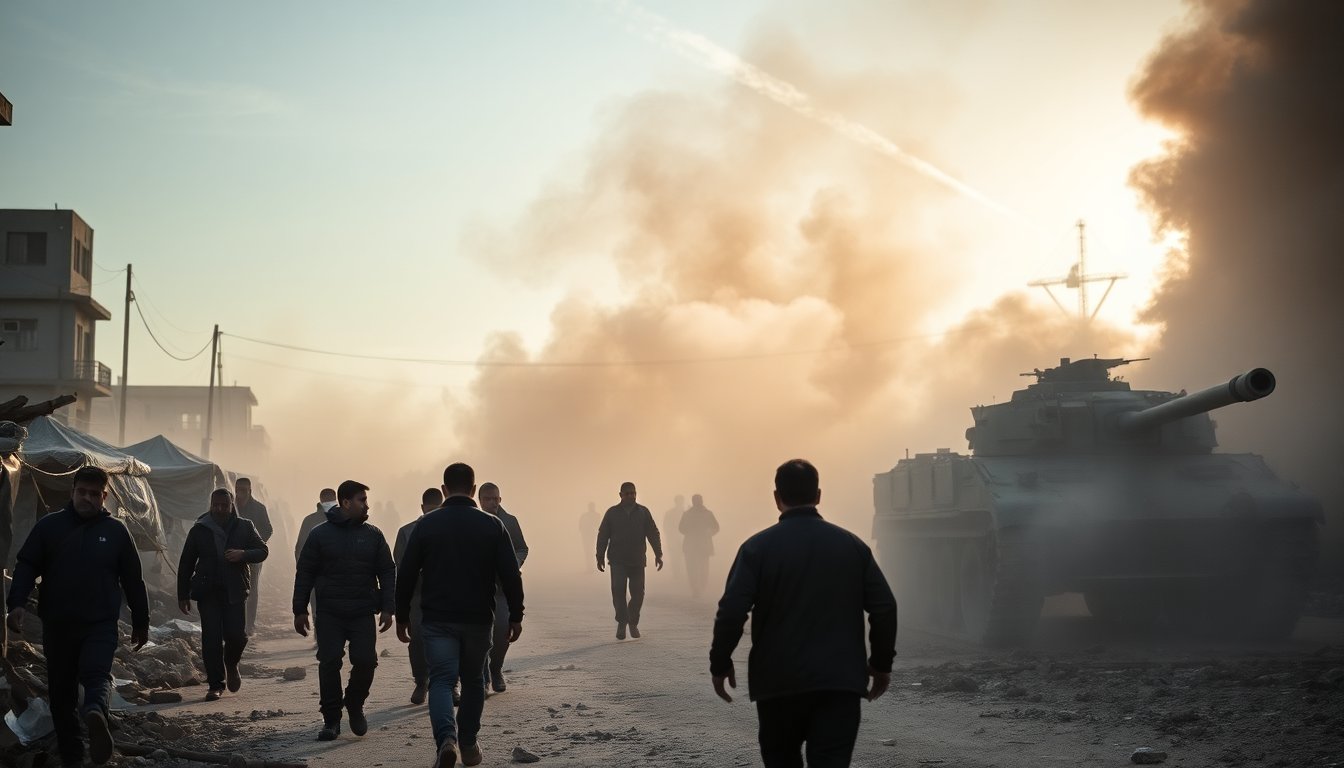Table of Contents
The ongoing conflict in Gaza City has reached a critical point, with military operations escalating dramatically. Residents find themselves caught in a deadly squeeze as the Israeli military advances on the urban center from multiple fronts. This maneuver is pushing civilians towards the coast, where they face the grim reality of displacement and uncertainty.
Reports indicate that Israeli forces are employing a combination of infantry, tanks, and artillery, supported by air strikes, to exert pressure on the militant group Hamas. As the situation deteriorates, the humanitarian crisis intensifies, leaving residents scrambling for safety amidst relentless attacks.
Escalating Military Operations
According to Israeli military spokesperson Nadav Shoshani, the strategy involves encircling civilians, effectively creating a no-win situation for those caught in the conflict. Al Jazeera’s correspondent, Hani Mahmoud, reported that the military’s advance from both the northwest and southeast has left many residents feeling trapped, with nowhere to turn but towards the coastal areas, specifically the al-Rashid road leading south.
Humanitarian Implications
The relentless bombardment of densely populated neighborhoods has resulted in widespread panic and chaos. Families are fleeing their homes, faced with the terrifying prospect of losing everything. On Thursday, medical reports confirmed that at least 40 individuals lost their lives due to the ongoing strikes. Amidst these apocalyptic scenes, the United Nations Office for the Coordination of Humanitarian Affairs (OCHA) warned that essential lifelines for the population are collapsing rapidly.
Statistics from the Palestinian Central Bureau of Statistics reveal that approximately 740,000 people, accounting for around 35 percent of Gaza’s population, remain in the northern region of the enclave. However, with the continuous bombardment and dwindling basic services, this number is likely to decrease significantly as more residents are forced to evacuate.
International Response and Implications
The UN humanitarian office has expressed grave concerns regarding the Israeli blockade on aid efforts, highlighting the closure of crossings and restrictions on essential food supplies. This situation has left many families in dire need of assistance. Outside of Gaza City, additional casualties have been reported, with at least ten more Palestinians killed in various areas of the enclave due to Israeli fire.
Calls for Ceasefire
As the violence escalates, the international community remains divided on how to respond effectively. Recently, the United States vetoed a UN Security Council resolution that called for an immediate ceasefire in Gaza and the lifting of restrictions on humanitarian aid. This resolution, supported by 14 of the 15 council members, aimed to address the catastrophic humanitarian situation resulting from ongoing hostilities.
In the aftermath of the veto, Palestinian Ambassador Riyad Mansour condemned the decision, expressing disappointment that the Security Council has failed to fulfill its role in protecting civilians. The UN High Commissioner for Human Rights criticized Israel’s military actions, arguing that they exhibit a blatant disregard for the principles of international law.
Furthermore, the conflict has taken a devastating toll on the civilian population, with reports indicating that the war has claimed the lives of over 65,000 people, including thousands of children and women. In light of the unfolding tragedy, the Algerian ambassador to the UN made an emotional plea for forgiveness on behalf of the international community, acknowledging the world’s failure to uphold the rights of the Palestinian people.
The Path Forward
As the Israeli military continues its operations with no clear end in sight, the humanitarian crisis in Gaza worsens. The absence of safe zones for civilians and the ongoing violence create a volatile environment, leaving families with the heart-wrenching choice of fleeing or facing the consequences of remaining. With each passing day, the urgency for a peaceful resolution grows, and the need for international intervention becomes increasingly critical.
Reports indicate that Israeli forces are employing a combination of infantry, tanks, and artillery, supported by air strikes, to exert pressure on the militant group Hamas. As the situation deteriorates, the humanitarian crisis intensifies, leaving residents scrambling for safety amidst relentless attacks.0


